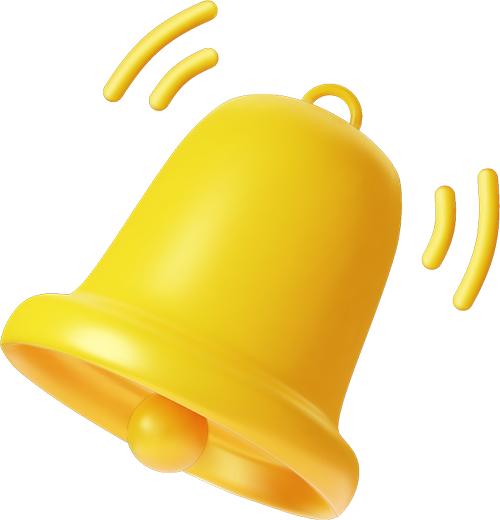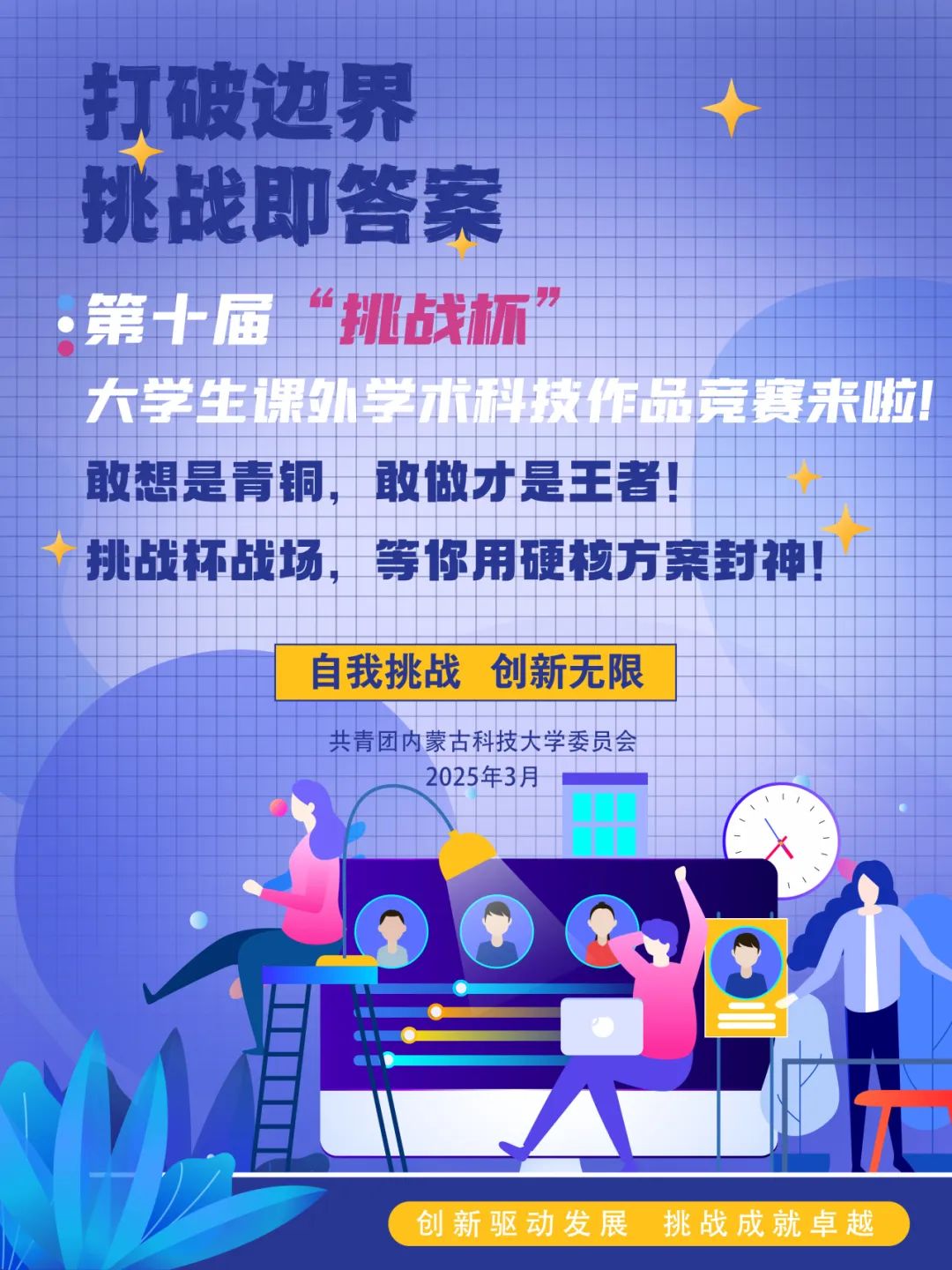
In the laboratories and libraries of Inner Mongolia University of Science and Technology, there are always teams like this every year: they may not have top-notch equipment, but they can develop campus safety warning devices using Arduino; their survey samples may be less than a thousand, yet they thoroughly conduct research on elderly care needs throughout the Baotou community. The Challenge Cup has never been the exclusive domain of prestigious schools or top students. Over the past three years, our university has seen hundreds of teams advance to the provincial competition—this guide will take you through the entire process from topic confusion to tangible results.
IMUSTers, let’s start highlighting the key points!

1
Understanding the Competition: Know the Rules Before Acting
“
1
What is the competition?
It focuses on academic papers, research reports, and technological inventions, emphasizing academic value, technical application, and social significance, rather than commercial plans (the “Small Challenge” focuses on market value).
Nature: A national academic and technological competition for university students, divided into three main categories: “Technological Inventions”, “Philosophy and Social Sciences Research Reports”, and “Natural Science Academic Papers”.
Core requirements: Innovation (Is your idea novel enough?) + Practicality (Can it solve real problems?) + Social value (Is it helpful to society?).
2
Key Time Points
University Competition (March-April): Submit works + preliminary results (e.g., models, data).
Provincial Competition (May-June): Need to improve works (e.g., complete papers, functional prototypes).
National Competition (October-November): Final results + on-site defense submission required.
3
Common Pitfalls for Beginners
❌ Blindly pursuing “high-end” solutions while ignoring feasibility (e.g., wanting to create a car engine but the team only has liberal arts students).
✔️ Correct approach: Start with small problems, such as “Optimizing the Campus Express Packaging Recycling System”.

2
Team Formation: Find the Right People and Define Roles Clearly
“
1
Team Configuration
Technical Core: 1-2 people (proficient in basic programming/experimental skills)
Research and Writing: 1-2 people (skilled in literature retrieval, data analysis)
Defense and Presentation: 1 person (clear logic, strong communication skills)
Advisor Selection: Prioritize contacting faculty with research project experience (e.g., professors who have participated in provincial projects), avoiding over-reliance on external experts.
Bonus: Cross-disciplinary teams (e.g., Computer Science + Sociology + Design).
2
Advisor Selection
Academic Advisor: Find professors with research experience (to ensure academic rigor).
Industry Advisor: Seek experts from enterprises or government departments (to provide practical application advice).
3
Recommended Collaboration Tools
Progress Management: Regular offline meetings, using Tencent Docs/Feishu to create shared Gantt charts.
File Management: Use GitHub or Baidu Cloud to save versions (to avoid file loss).

3
Topic Selection Strategy:
How to Find a “Small but Beautiful” Topic?
“
1
Sources of Topics (3 Main Directions)
Social Pain Points: e.g., “Research on the Difficulty of Installing Elevators in Old Communities”; “Research on the Occupational Security of Delivery Workers”.
Policy Hotspots: e.g., “Protection of Intangible Cultural Heritage in Rural Revitalization”; “Calculation of Campus Carbon Footprint under Carbon Neutrality”.
Technological Breakthroughs: e.g., “AI-based Campus Canteen Leftover Prediction System”; “Low-cost Water Quality Monitoring Sensors”.
2
Topic Selection Strategy: Focus on “Small and Precise” Entry Points
Recommended Topic Directions
1. Natural Science:
Low-cost experimental improvements (e.g., optimization of laboratory wastewater treatment devices)
Application of local resources (e.g., performance testing of rare earth materials in industrial catalysis)
2. Social Sciences:
Rural revitalization practices (e.g., research on the promotion difficulties of e-commerce in pastoral areas)
Protection of ethnic culture (e.g., analysis of the current situation of Mongolian intangible cultural heritage transmission)
3. Technological Inventions:
Development of practical tools (e.g., campus safety monitoring system based on Arduino)
Design of environmental protection equipment (e.g., low-cost solar-powered waste sorting bins)
Topic Avoidance Guide
❌ Topic too broad: “Research on China’s Education Issues” →
✔️ Change to “Intervention Plan for Attention Loss in Online Learning among College Students”.
❌ Insufficient data: Social science projects require at least 100 valid questionnaires + 10 in-depth interviews; technological projects need comparative experimental data (e.g., energy consumption reduced by 20%).
Quickly Validate Feasibility
Low-cost trial and error: Use open-source tools (e.g., Python + free API) to create prototypes.
Pre-experiment: For example, test 50 samples in a small area to validate initial effects.
4
Preparation Process: Advance in Phases
“
1
Phase 1: Preliminary Preparation (1-2 months)
Literature Research
Read core journal articles from the past three years (CNKI/Web of Science), summarizing existing research gaps.
Focus on highlighting “innovation gaps” (problems that others have not solved).
Use platforms like CNKI and Wanfang to search for keywords like “Challenge Cup + Inner Mongolia”, referencing past award-winning topics.
Technical Pre-research
For technology: Learn hardware development with Arduino/STM32, or data analysis with Python/Matlab.
For social sciences: Master statistical analysis tools like SPSS/Stata.
Prototype Development/Data Collection (2 months)
For technology: Create a simple demo using open-source hardware (Arduino, Raspberry Pi), keeping costs under 500 yuan.
For social sciences: Include region-specific questions when designing questionnaires (e.g., “Last Mile Logistics Issues in Pastoral Areas”).
Demand Research
Design questionnaires (distributed using “Questionnaire Star”), interviewing more than 10 target users.
2
Phase 2: Breakthrough in University Competition (1 month)
Deliverables
For technology: Create a functional demo (even if the functionality is simple).
For social sciences: Complete a research report with over 200 samples.
Defense Preparation
Create a PPT (within 5 minutes), with the logic: pain points → solutions → evidence → value.
Simulate the defense in advance (find classmates to act as judges and ask questions).
3
Phase 3: Advanced Refinement (Provincial Competition to National Competition)
Iterative Upgrades
For technology: Optimize performance (e.g., improve accuracy from 80% to 90%). Supplement with a patent novelty report.
For social sciences: Expand sample size (from 200 to 1000). Add policy recommendations (e.g., submit to local government departments for adoption proof).
Continuous Project Refinement – Expert Guidance
Consult experts for refinement at least three times, focusing on optimizing logical coherence and data rigor, and learning basic defense rhetoric.
5
Project Design: Make a Strong Impression on Judges
“
1
Text Standards
For technological inventions: Attach structural diagrams, performance comparison tables (e.g., your sensor is 50% cheaper than market products).
For social science research: Use bar charts/heat maps to display data conclusions.
For academic papers: Keep the abstract within 300 words, highlighting innovative conclusions.
2
Presentation Skills
PPT Design: Focus on one key point per slide, using comparison images (before improvement vs. after improvement).
Physical Demonstration: Allow judges to experience hands-on (e.g., scan to try a mini-program).
Data Visualization: Use Tableau/ECharts to create dynamic charts.
6
Defense Skills: How to Handle Judge Questions?
“
1
Presentation Strategy
Start with a hook: Introduce with a real case (e.g., “Last year, our school’s takeaway packaging waste increased by 30%”).
Let data speak: Emphasize key metrics (e.g., “cost reduced by 40%”, “efficiency doubled”).
2
High-frequency Question Response Templates
Q: Where is your innovation point?
A: Our solution applies XX technology to the XX scenario for the first time, solving the XX problem in traditional methods.
Q: How do you ensure scientific validity?
A: Experimental data has been replicated in the university laboratory and confirmed by the supervising teacher.
Q: How will you promote your results?
A: We have piloted with XX community/enterprise, and the next step is to collaborate with XX department to expand coverage.
3
Avoidance Tips
When faced with questions you can’t answer: Honestly respond, “We have not delved deeply into this area yet, and will improve it in the future”.
Avoid arguing with judges, maintain politeness: “Thank you for your suggestion, we will consider it seriously”.
7
Resource Support: Make the Most of These Tools for Efficiency
“
1
University Resources
Laboratory Equipment (3D Printers)
Research Funding: Apply for university-level innovation projects to support initial costs.
2
Regional Cooperation
Collaborate with local enterprises/communities (e.g., design environmental monitoring solutions for Baotou Steel Plant) to obtain real data and application scenarios.
3
Recommended Free Tools
Data Analysis: Kaggle datasets, publicly available data from the National Bureau of Statistics.
Design Tools: Use Canva for posters, Figma for prototype drawings.
Learning Platforms: Bilibili MOOCs (search for “Challenge Cup Award-winning Case Analysis”).
END

Appendix: Beginner’s Pitfall Checklist

1. Time Management: Start two months before the university competition to avoid last-minute all-nighters.
2. Cost Control: Hardware project budget should not exceed 5000 yuan.
3. Team Communication: Hold weekly meetings at a fixed time, using online forms to synchronize progress.

Produced by the Youth Media Center of Inner Mongolia University of Science and Technology
Editor | Jia Songkai
Initial Review | Wang Ruiqin
Audit | Du Ying, Wang Junjie
Approval | Wang Yibo, Luo Qiang

